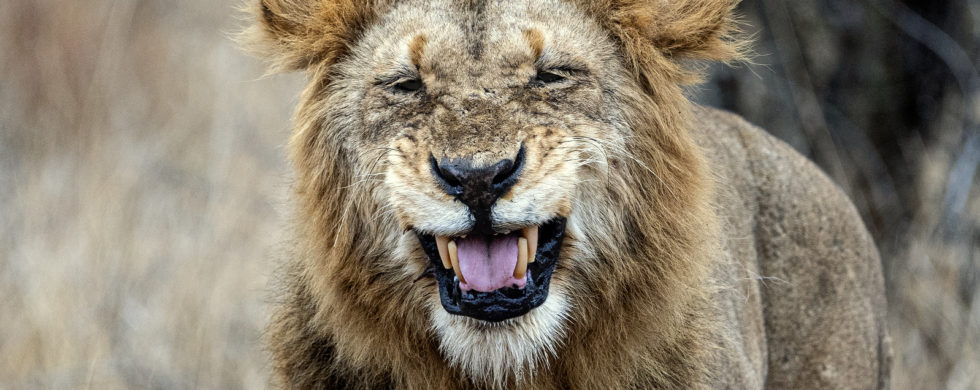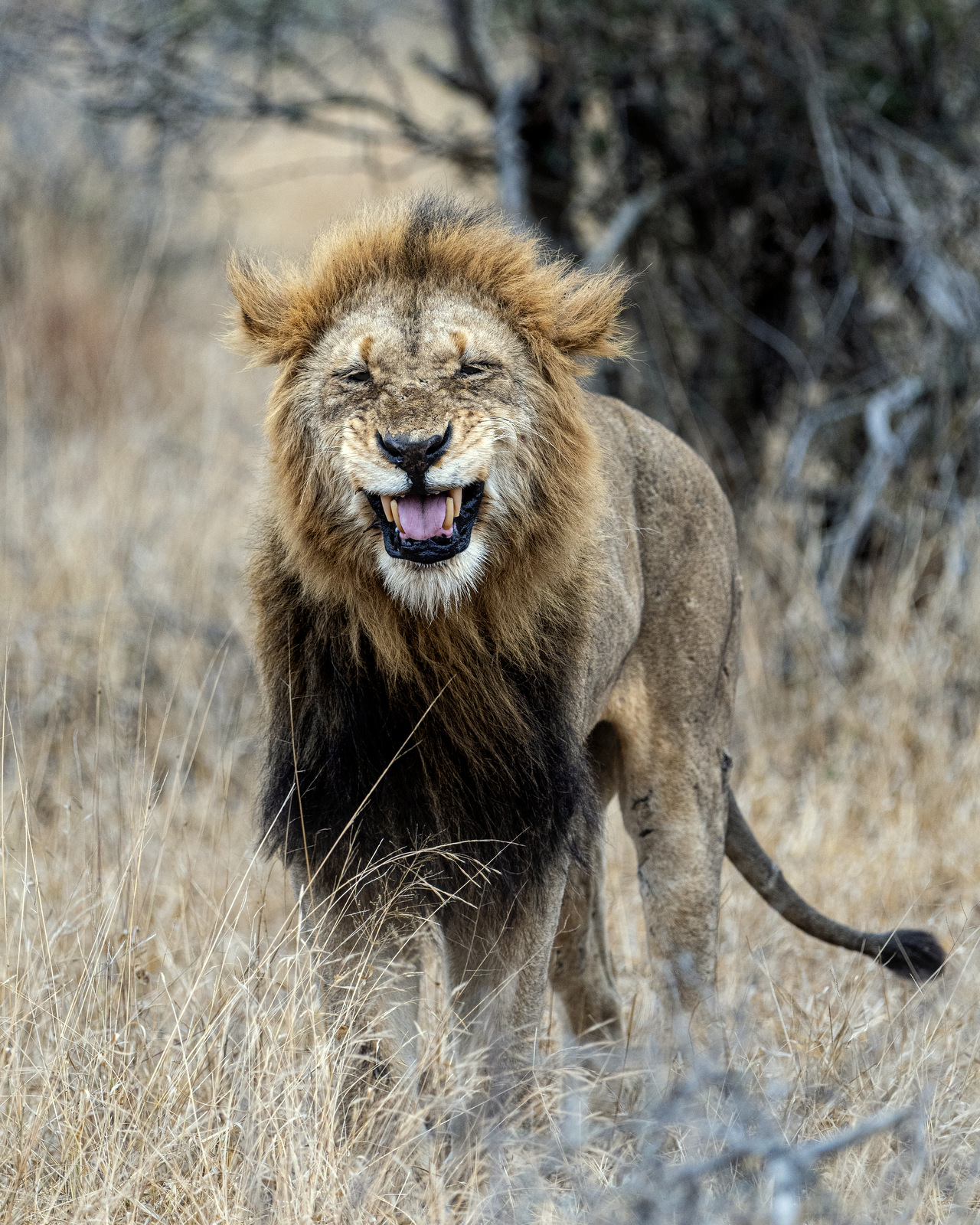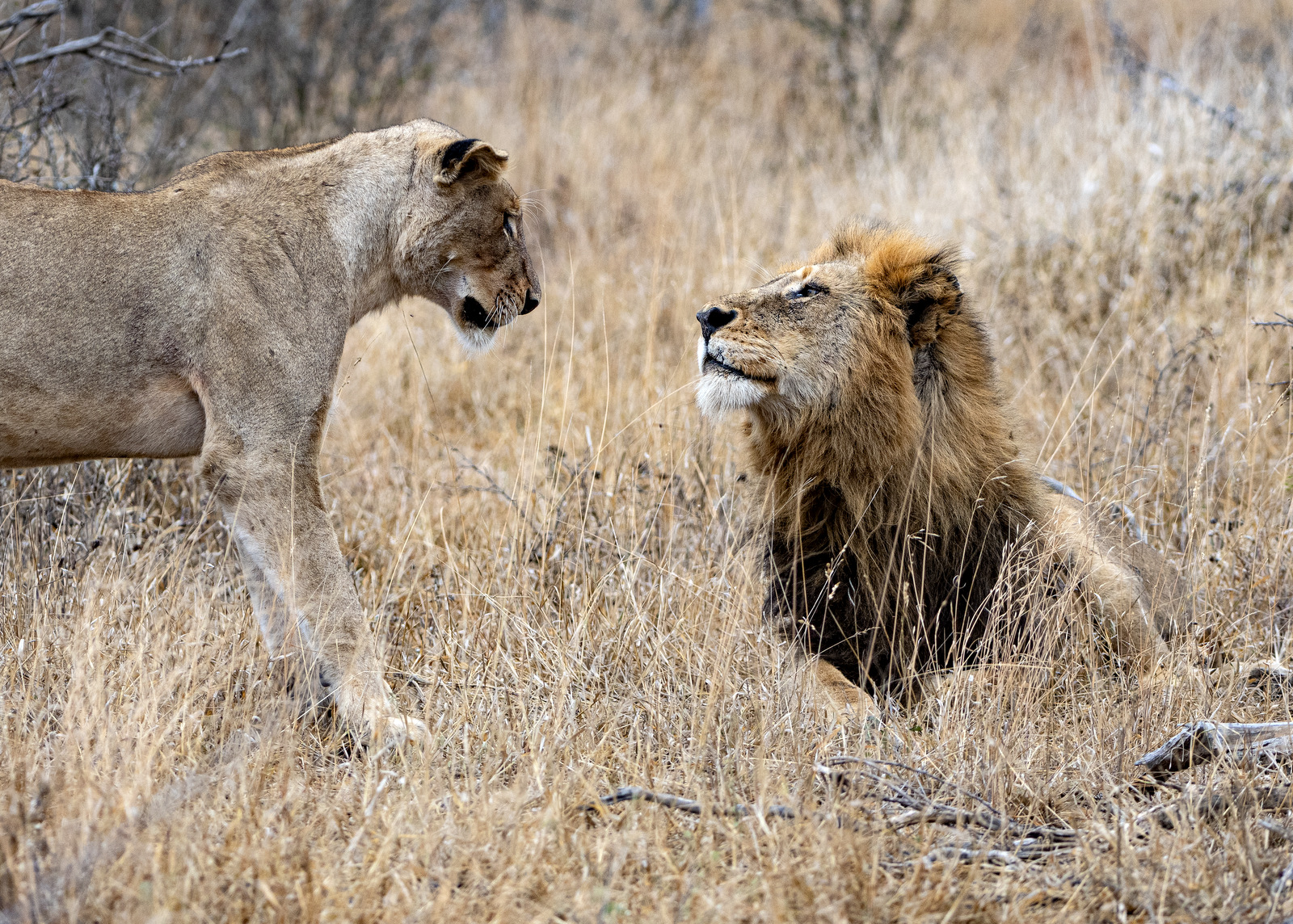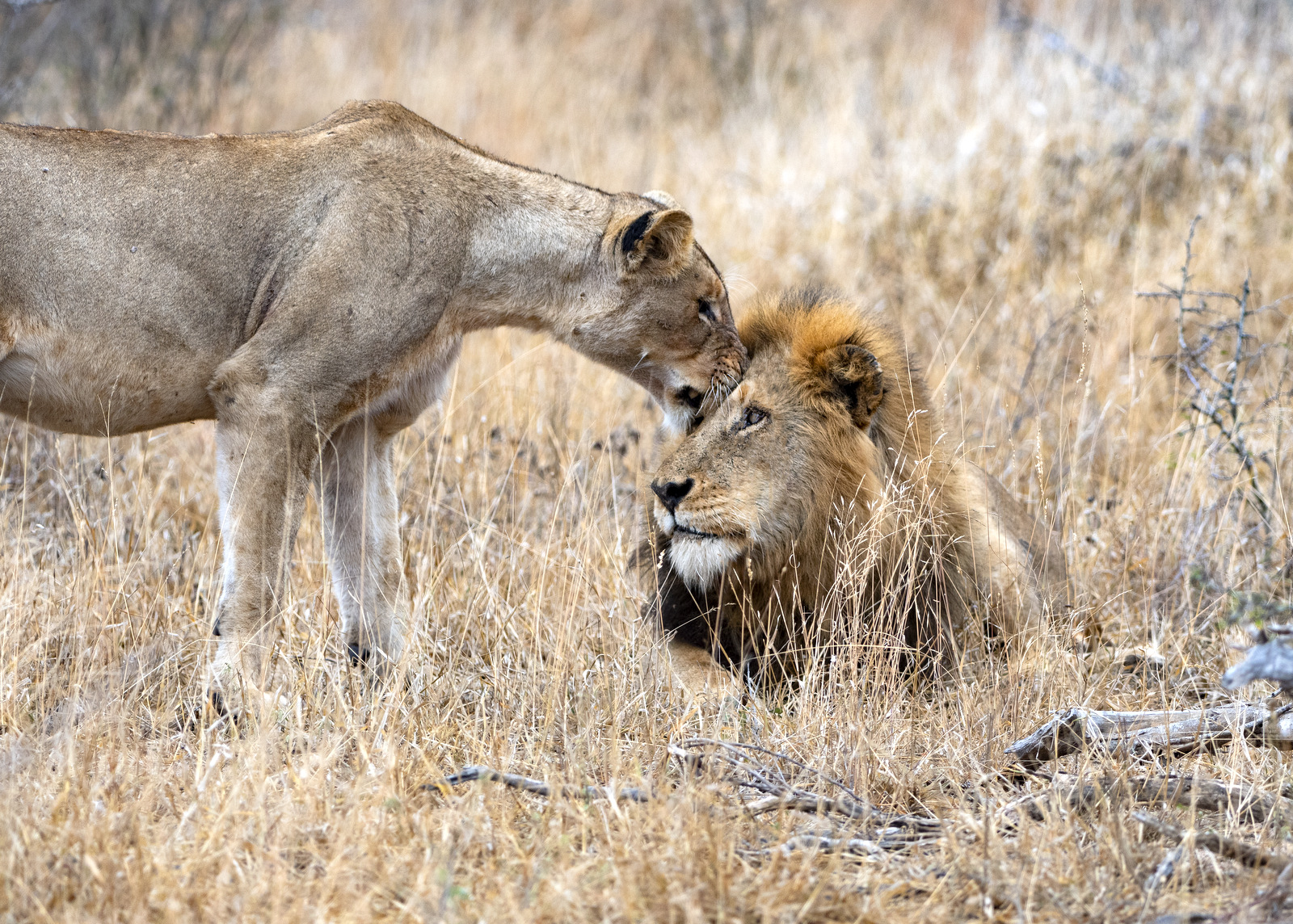
30
2019Love in the Air?
Shot of the Month – September 2019
So what’s going on with this big ol’ male lion? Is he snarling? Is he about to sneeze? Did he get a whiff of a stinky warthog?
All good guesses, and thanks for playing along, but all incorrect.
What we got here is a good example of the flehmen response. Uhhhh, the flaming what?
The flehmen response — in German flehmen means to “bare the upper teeth.” Ok, that seem accurate, Simba here is indeed baring his upper teeth. So we got the “what,” how about the “why”?
Well, many animals exhibit this behavior to draw in air to reach a specialized organ above the roof of the mouth. This organ has specialized receptors to detect pheremones, scents and other chemicals. This organ is called the vomeronasal organ or Jacobson’s organ (Ludwig Jacobson described the organ in 1813, even though Frederick Ruysch found it first in 1732). The vomeronasal organ is connected directly to the brain and allows the animal to better assess potential prey animals, predators and potential mates. This process is distinct from smelling and engages a completely different pathway to the brain.
Some animals, like cats and horses have to raise their lips to allow air to reach this specialized sensor. Other animals, like elephants can access their vomeronasal organ without the lip curl (Thank You Very Much). Flehmen is demonstrated by most of Africa’s ungulates and predators including giraffe, rhinos, buffaloes, lion, leopards, cheetahs and other cats. Fun fact: Hippos can do the flehmen response underwater! Jacobson’s organ is also found in all snakes and lizards, dogs, cattle, pigs, and in some primates. Snakes use the organ to sense prey — they stick their tongue out to collect scents and then touch their tongue to the opening of the organ when the tongue is retracted. Humans do not have this specialized organ. Both males and females can demonstrate the flehmen response. For example female sable antelope use flehmen behavior to allow them to synchronize conception and birth of their offspring in a herd.
The male lion above, photographed in Kruger National Park in South Africa, wrinkled up his nose after his lady friend walked over to say “Hi.”
And she gave him a friendly head nuzzle:
After this the male stood up and checked to see if “love was in the air.” For the non-romantics: He triggered the flehmen response to draw in air to see if the female was emitting pheremones that would indicate that she was receptive to mating.
Love….flehmen…a rose by any other name would smell as sweet…..
Until next month….m
Nikon D500, Nikon 200-400 mm @ 310 mm, effective 450 mm), f/4, 1/640s, ISO 560, +0.5 EV
Sources:
What is the flehmen response and why is it used?



